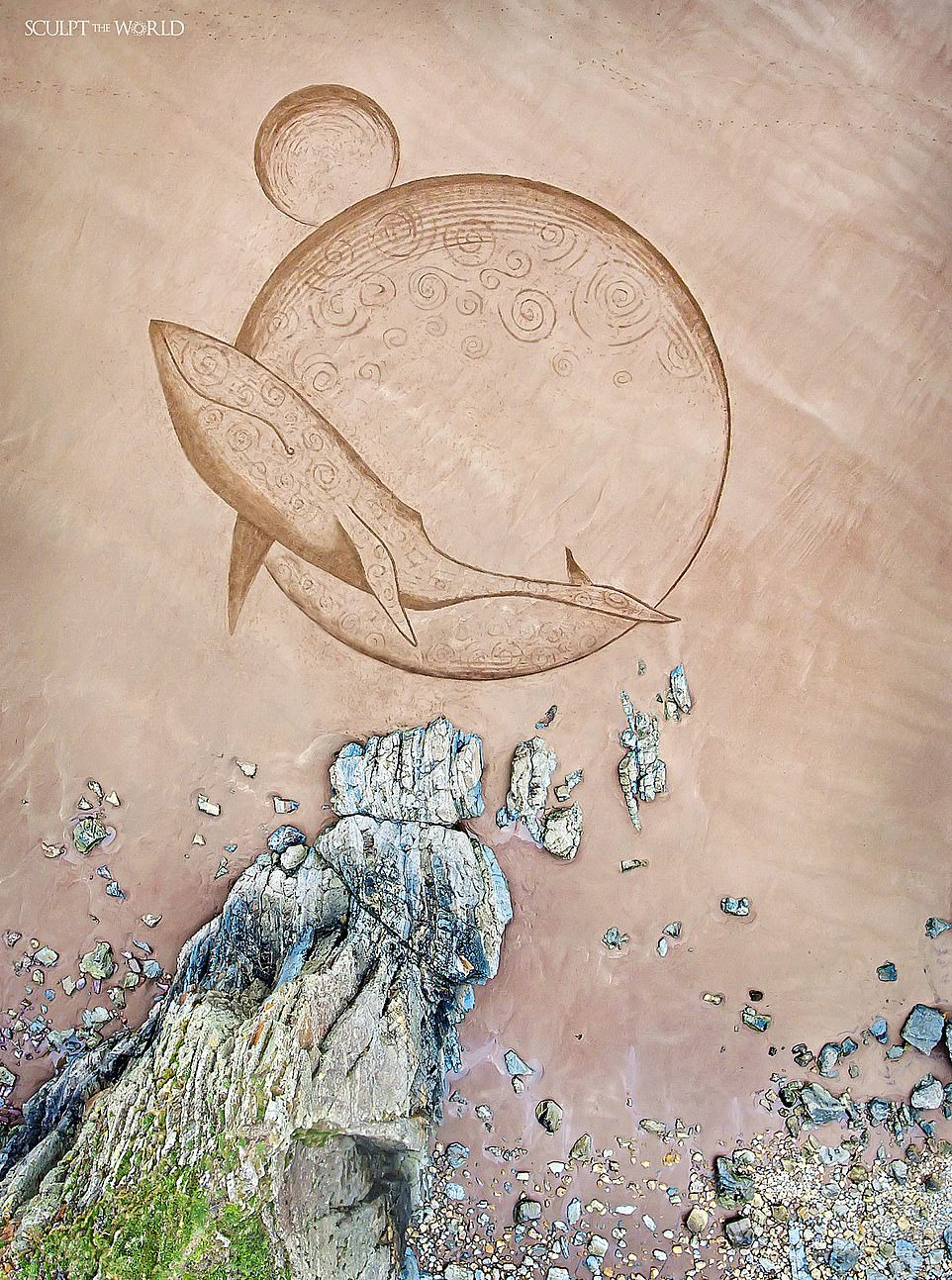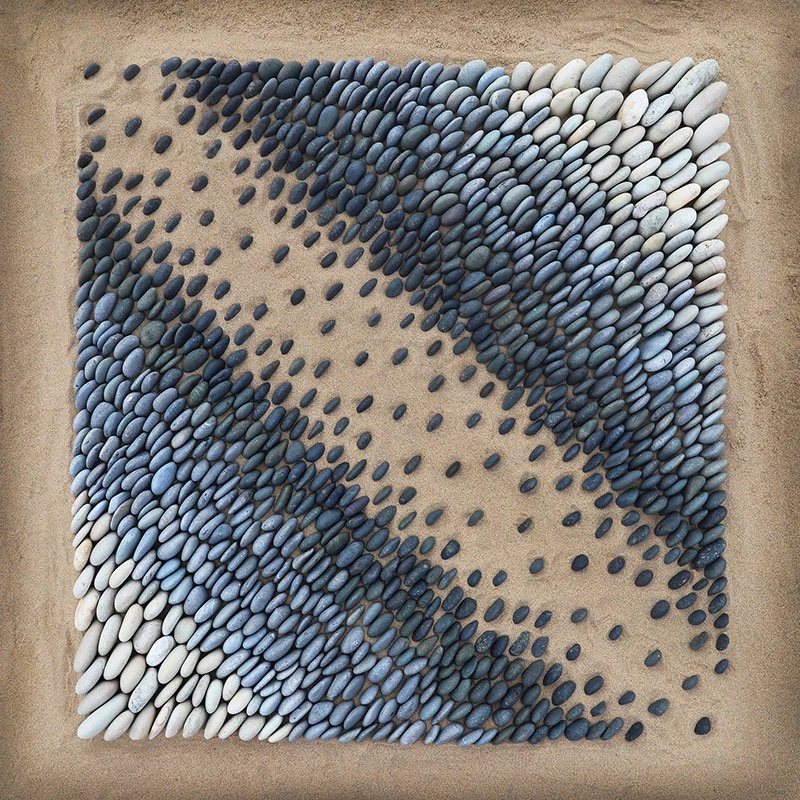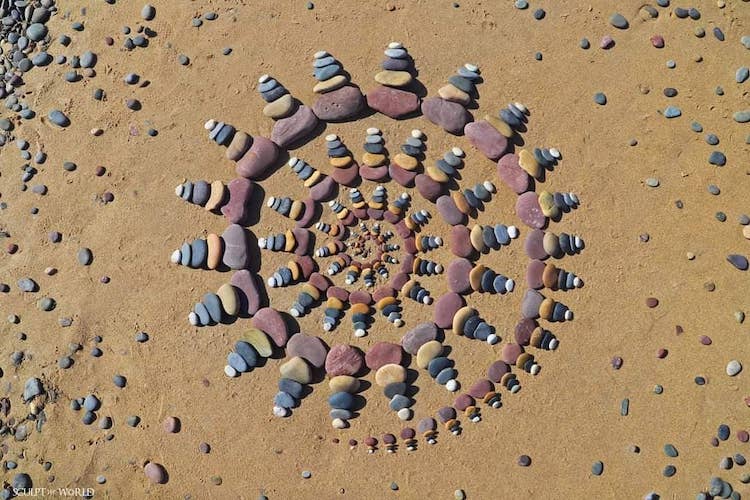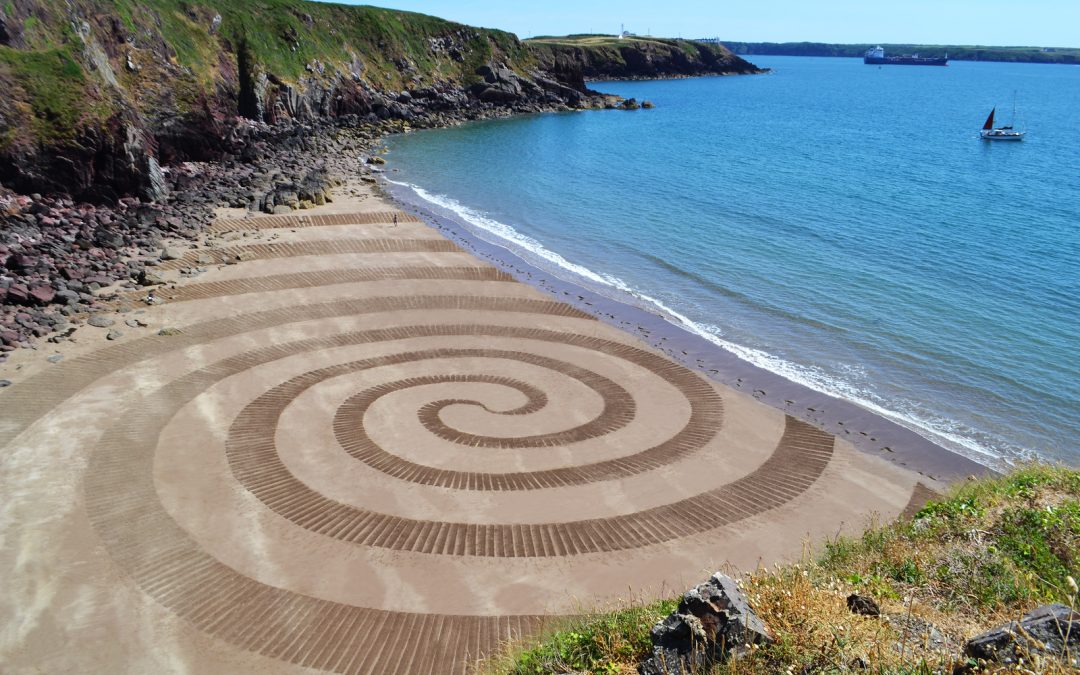Jon Foreman: the sculptor of the Pembrokeshire coastline
What is Land Art? A form of contemporary art that emerged between ‘67 and ’68 in the USA consisting in the artist’s intervention in his environment, making himself part of the work of art. These creations lead to an awareness of such an urgent topic in debates: the environmental issue.
An artistic form that reacts to the often static museum atmosphere, thus leaving the tradition of exhibition spaces and the way of conceiving the work of art.
In 1984, the writer and curator John Beardsley defined it as “an integrated form of sculpture as landscape and landscape as sculpture in which the context with its changing conditions takes on the value of the main subject in the formation and perception of the work“.

Jon Foreman, Sculpt the World – Credits: Mail Online
When it comes to contemporary Land Art, an honorable mention should be made to artist Jon Foreman. He creates incredible sculptures using natural materials in different shapes, colours and sizes.
Since his youth, the beach on the Pembrokeshire coast in Wales has been his canvas and sand, stones and shells his tools. He thus intervenes on the landscape, indeed, he sculpts it, so much so that he himself defines and titles his art project “Sculpt the World”.
Foreman’s fascinating compositions include works of the most diverse dimensions, from a few tens of centimeters to even works 100 metres in diameter: in this case, the magic can truly be captured from above.

Jon Foreman, Sculpt the World – Credits: Twisted sifter
Jon Foreman experiments with materials, researches colours, studies the effects of light and shadow not only on the coast, but also in other environments: however, he only uses materials that are always found on site. In the woods he uses leaves, twigs and rocks, while in abandoned spaces he uses broken glass, debris or ashes.
In the artist’s sculptures, there is a shape that continuously recurs: the circle. Many symbolic readings can be made, from the shape of the planet earth to mandalas, to the concept of eternal return: the latter is particularly interesting because it recalls the specific fleetingness of this art form.

Jon Foreman, Sculpt the World – Credits: MY MODERN MET
In this regard, the artist states: “To give an example, these stone creations are made a few metres from where I collected them. Then the tide comes in and brings them back to the starting point. In this way, my art fits into the ecological cycle of nature”.
An ephemeral and fleeting art, which is often seen by artists not only as a means of expression but as a kind of therapy: Land Art is a way of escaping the stress and restlessness of everyday life.
And it is precisely the transient nature of this art form that makes it special, fascinating and educational: it teaches us the importance of the moment.

